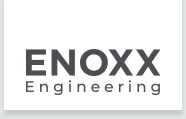- Home
- ENOXX Engineering
- Technology
- Joining
Joining with TIG, MAG and laser welding
The joining of individual parts plays a crucial role when assembling components. The choice of process is particularly decisive for welding to ensure the subsequent quality and properties of the individual seam. At B.PRO, we often use different welding processes for a single component to guarantee our quality standards are met. Each process has its own specific advantages.
TIG welding:
- Time-efficient
- No slag or welding spatter is produced during welding
- Minimum welding distortion
- All positions possible
- High welded seam quality
MAG welding:
- Very fast working speed
- No slag is produced during welding
- Welded seam is protected against oxidation
- Minimum welding distortion thanks to low influence of heat from the material
- All positions possible
- High strength in the welded seam
- Only minimal finishing work required
Laser welding:
- Precise energy input, highly accurate working
- Low thermal distortion
- Minimum structural change thanks to low influence of heat
- Bubble-free welded seams
- Welding of complicated weld geometries
- Minimum reworking
- Even difficult-to-access points can be reached
- Welding possible at a greater working distance
Our machine pool includes robot welding cells with patented inert gas welding technology and welding robots and systems for TIG and plasma welding.

These methods ensure consistently high quality in welded seams during series production. There is no such thing as impossible when it comes to our employees’ welding technique expertise. This is why our specialists are also able to perform high-quality manual welding work.
Our welding methods:
- TIG and MAG welding with robots
- Plasma welding with robots
- Spot welding
- Drawn arc stud welding
- Laser welding method
- Manual welding method
Joined together forever

A component's quality and operating life essentially depend on the quality of its welded joints. At B.PRO, we determine and plan the optimum welding points and methods right from the component development stage.
Efficiency is always at the forefront. That is why we always work with welding seam simulations. This allows us to identify properties and welding distortion at a very early stage in the development process, even before the first prototypes are made. This enables us to prevent potential future weak points right from the start.
Laser cabins

The Trumpf TruLaser Cell 7040 features a solid-state laser source with a laser output of 4 kW. It enables us to meet customer requests even sooner since it is capable of both cutting and laser welding.
TruLaser Cell 7040 with TruDisk 4001
- Working range 4000X1500x750
- Panel thickness between 0.4 mm and 5 mm









